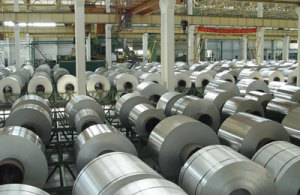 According to Gulf Today, the Middle East’s aluminium industry has not only fulfilled forecasts made in late 2008 that it has the right fundamentals to survive and thrive, but also is entering a stage of strong expansion, both in primary production and downstream developments. That was the strong message to conveyed during the 29th International Aluminium Conference, which took place in Abu Dhabi recenlty, and attracted more than 500 key industry decision-makers from around the world.
According to Gulf Today, the Middle East’s aluminium industry has not only fulfilled forecasts made in late 2008 that it has the right fundamentals to survive and thrive, but also is entering a stage of strong expansion, both in primary production and downstream developments. That was the strong message to conveyed during the 29th International Aluminium Conference, which took place in Abu Dhabi recenlty, and attracted more than 500 key industry decision-makers from around the world.
The event was organised by Metal Bulletin and hosted by EGA, the jointly owned aluminium conglomerate formed by Mubadala Development Corporation and Investment Corporation of Dubai by integrating their aluminium industry assets. EGA’s core operating assets are Dubai Aluminium (Dubal) and Emirates Aluminium Company Limited (Emal). Mr HE Eng. Suhail Mohamed Faraj Al Mazrouei, The UAE’s Minister of Energy,, highlighted the importance of EGA and the greater aluminium sector to the local economy in his opening address on the first day of the event. He said that “From the early days of our union, aluminium was identified as the metal of the future and the industry of the future. Today, aluminium stands as a flagship industry in our nation’s development and on-going diversification.”
Mr Abdulla Kalban MD & CEO of of EGA sketched the growth of the sector since the onset of the global economic crisis in 2008, highlighting its successes against the odds. Back then, the GCC had two smelters (Dubal and Aluminium Bahrain), which produced 1.92 million tpa. Today there are six smelters in the GCC, with an annual production capacity of 5 million tonne per annum all operating at full capacity. Moreover, a 2012 study found that the GCC smelters had the lowest conversion cost, business cost and economic cost per tonne of aluminium; as well as the lowest power costs per tonne of aluminium.
Mr Kalban said that “The future of the Middle East aluminium industry remains bright. In the primary aluminum sector, further capacity expansions have been announced by four of the GCC smelters that will collectively add another 2.25 million tonnes to the region’s annual production capacity. The downstream aluminium industry is also expanding, thanks to strong progress in local infrastructure development, increasing demand in international markets and the pro-active development of aluminum clusters, The growth of both sectors heralds more job creation opportunities, which will contribute further to the social and economic development of the region.”



